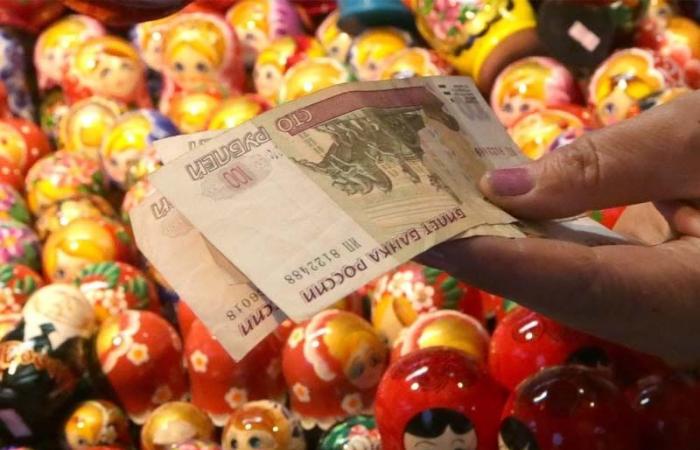The Russian currency, very volatile for three years, had exceeded the symbolic threshold of 110 rubles per dollar on Wednesday, against a backdrop of escalating Russian-Western tensions around Ukraine and recent American sanctions.
Russian President Vladimir Putin assured Thursday that there was “no reason to panic”, while the ruble is at its lowest against the dollar and the euro since March 2022.
“The situation is under control,” he declared during a press conference on the sidelines of a regional summit in Astana, Kazakhstan.
The ruble, very volatile for three years, had exceeded the symbolic threshold of 110 to the dollar on Wednesday midday, against a backdrop of escalating Russian-Western tensions around Ukraine and recent American sanctions.
At that time, one euro was exchanged for 115.7 rubles.
We had to go back to March 2022, in the very first weeks of the Russian invasion in Ukraine, to see the ruble so weak against the dollar (1 against 120 rubles on March 11, 2022, according to the BCR) and the euro , when the West had implemented a barrage of sanctions to try to shake up the Russian economy.
On Thursday, Vladimir Putin assured that “many seasonal factors” such as “payments to the budget” and “(world) oil prices”, in addition to high inflation, were the cause of the pronounced weakening of the ruble .
The rise in prices, at 8.5% in October, remains a major problem for the Russian authorities, at a time when they anticipate a deceleration of activity in 2025, raising fears of the potential appearance, in the long term, of a cycle of stagflation.
At the end of October, the Central Bank of Russia (BCR) raised its key rate to 21% – its highest level since 2003 – in an attempt to curb inflation.
On Thursday, the BCR had urgently announced to stop all purchases “of currencies on the domestic foreign exchange market”, and “until the end of 2024”, to stem the fall of the ruble.
In recent days, the uncertain geopolitical context around Ukraine – with the return in January of the unpredictable Donald Trump to the White House – has, it seems, affected investor confidence in the ruble, in the same way as the latest American sanctions against Moscow.
Last week, Washington announced a series of sanctions targeting around fifty Russian banks, including Gazprombank, the financial arm of the state gas giant Gazprom, used in particular for energy payments with foreign customers.
Before the war, the dollar was trading at the beginning of 2022 around 1 for 75-80 rubles on average.






